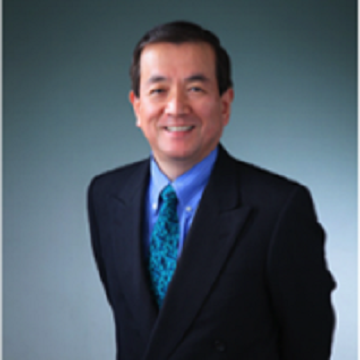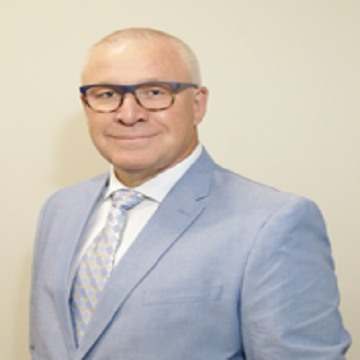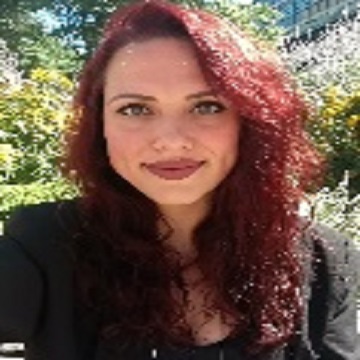Scientific Program
Keynote Session:
Title: Electronic water can reduce oxidative stress in cancer and diabetes patients for 3 weeks drinking
Biography:
Masahiro Onuma has expertise in oxidative disease prevention to use non-medical product based on GSK’s experience of Allopurinol which is the strongest anti-oxidant efficacy in this world. He creates new indication of Allopurinol for stomatitis induced by cancer treatment which was approved by the Japanese Cancer treatment committee to propose new mechanism of Allopurinol for anti-oxidant. And now, there are so many new research papers of Allopurinol in the world.
Abstract:
Oxidative stress means a state there is imbalance between the oxidizing action and the reducing action due to reactive oxygen species (ROS) in a living body, resulting in the oxidizing action becoming dominant. Oxidative stress arises as the balance between production and removal is disrupted through excessive production of ROS and impairment of the antioxidant system. Oxidative stress has been reported to be involved in the onset and progress of various diseases. Characteristics of Type 2 diabetes are insulin secretion failure and insulin resistance, but it seems that oxidative stress is greatly involved in insulin secretion failure. In the insulin secretion-inducing β cells of Langerhans islets in the pancreas, the amount of superoxide dismutase (SOD), which is representative of the ROS elimination system, is small and resistance to oxidative stress is considered to be weak. Regarding cancer, it is well known that chronic inflammatory conditions increase the risk of carcinogenesis. Cells such as neutrophils and macrophages are activated in the inflammation area leading to increase in production of active oxygen and nitric oxide. These free radicals cause DNA mutation and cell proliferation thereby promoting cancer development. When chronic inflammation is present, cancer develops more easily. Electronic water, which was developed to generate electron in water, was consumed for three weeks, after meals, between meals and before sleeping 6 times a day, and according to the test subjects' possible time periods. The amount of drinking water was 750-1000 mL, and BAP and d-ROMs checks for all cases were carried out at 4:30 pm. The results of cancer patients and diabetes patients were seen as attached. As a result, the d-ROMs value in the degree of oxidative stress has reduced, and the BAP value, which is an indicator of plasma antioxidant capacity, has improved significantly.
Title: An improved bio fabrication process to enhance cell survival of cartilage regeneration and functionality of the osteoarthritic knee when enriched with bone marrow mesenchymal stem cells
Biography:
Jose Manuel Baena is a research associate in "Advanced therapies: differentiation, regeneration and cancer" at IBIMER, CIBM, Universidad de Granada. He is the Founder of BRECA Health Care, pioneer in 3D printed custom-made implants for orthopaedic surgery, and REGEMAT 3D, the first Spanish bioprinting company. He is an expert in innovation, business development and internationalization, lecturer in some business schools and he also is passionate about biomedicine and technology. In his free time, he is also serves as a researcher at the Biopathology and Regenerative Medicine Institute (IBIMER).
Abstract:
Tissue regeneration (TR) is currently one of the most challenging biotechnology unsolved problems. Tissue engineering (TE) is a multidisciplinary science that aims at solving the problems of TR. TE could solve pathologies and improve the quality of life of billions of people around the world suffering from tissue damages. New advances in stem cell (SC) research for the regeneration of tissue injuries have opened a new promising research field. However, research carried out nowadays with twodimensional (2D) cell cultures do not provide the expected results, as 2D cultures do not mimic the 3D structure of a living tissue. Some of the commonly used polymers for cartilage regeneration are Poly-lactic acid (PLA) and it’s derivate as Poly-L-lactic acid (PLLA), Poly (glycolic acids) (PGAs) and derivate as Poly (lactic-co-glycolicacids) (PLGAs) and Poly caprolactone (PCL). All these materials can be printed using fused deposition modelling (FDM), a process in which a heated nozzle melt a thermoplastic filament and deposit it in a surface, drawing the outline and the internal filling of every layer. All these procedures use melting temperatures that decrease viability and cell survival. Research groups around the world are focusing their efforts in finding low temperature printing thermoplastics or restricted geometries that avoid the contact of the thermoplastic and cells at a higher temperature than the physiologically viable. This has mainly 2 problems; new biomaterials need a long procedure of clearance before they can be used in clinical used, and restrictions in geometries will limit the clinical application of 3D printing in TE.
Title: Assessing clinical implications and perspectives of the pathophysiological effects of erythrocytes and plasma free hemoglobin in autologous biologics for use in musculoskeletal regenerative medicine therapies
Biography:
Everts has been pioneering in the science and clinical applications of platelet-rich plasma (PRP) technology since 1984 and has been leading research teams in regenerative medicine in using biological therapies. Dr. Everts received his PhD in Medicine from the University of Utrecht in the Netherlands in 2007 on the subject of PRP. At present, he has published and authored more than 50 articles, or book chapters. He has been board member, and chairman of several health care organizations and was member of the sport medicine steering group at the International Olympic Committee. At present he is the Executive Director of Gulf Coast Biologics, a scientific-educational-research-training institute, and Chief Scientific Officer of EmCyte Corporation.
Abstract:
Autologous biologics, defined as platelet-rich plasma (PRP) and bone marrow aspirate stem cell concentrate (BMSC), are cell-based therapy treatment options in regenerative medicine practices, and have been increasingly used in orthopedics, sports medicine, and spinal disorders. These biological products are produced at point-of-care; thereby, avoiding expensive and cumbersome culturing and expansion techniques.Numerous commercial PRP and BMSC systems are available but reports and knowledge of bio-cellular formulations produced by these systems are limited. This limited information hinders evaluating clinical and research outcomes and thus making conclusions about their biological effectiveness. Some of their important cellular and protein properties have not been characterized, which is critical for understanding the mechanisms of actions involved in tissue regenerative processes. The presence and role of red blood cells (RBCs) in any biologic has not been addressed extensively. Furthermore, some of the pathophysiological effects and phenomena related to RBCs have not been studied. A lack of a complete understanding of all of the biological components and their functional consequences hampers the development of clinical standards for any biological preparation.This lecture aims to review the clinical implications and pathophysiological effects of RBCs in PRP and BMSC; emphasizes hemolysis, eryptosis, and the release of macrophage inhibitory factor; and explains several effects on the microenvironment, such as inflammation, oxidative stress, vasoconstriction, and impaired cell metabolism.
Oral Session 1:
- Stem Cell Engineering (SCE) | Tissue repair and Rejuvenation | Tissue Chip for Drug Screening | Nanotechnology in Tissue Regeneration
Title: Angiotensin converting enzyme (I/D) analysis and congenital heart diseases in Pakistani population
Biography:
Afsheen Arif has an expertise in rare genetic disorders. She has done her PhD on congenital heart disorders and their genetics in Pakistan for the first time. The unique genetic makeup of the patients from our population should have personalized methods of treatment. She has fifteen publication and five students currently working in her lab. Her future aims are to develop the genetic diagnostic setup for these patients.
Abstract:
Angiotensin converting enzyme (ACE) is a functional enzyme in renin-angiotensin system (RAS) during heart regulation. It is a 21-kb long gene which encodes an enzyme, on long arm of chromosome 17. ACE gene comprises of 26 exons with 25 introns. Genomic studies found that on ACE intron 16, an insertion or a deletion of a 287-bp noncoding Alu repeat sequence effects enzyme activity. This insertion/deletion polymorphism have a significant role in cardiovascular diseases, diabetes chronic obstructive pulmonary disease and skin disorders, furthermore, it was reported that D allele has shown an association with elevated levels of plasma ACE. Congenital heart diseases (CHDs) are the structural, functional and multifactorial defects, present at birth. Chromosomal aberration, alteration of gene (InDel, SNP) and environmental factors are some of the known causative agents of CHDs. However, to date there is limited information on the association of InDel polymorphism of ACE gene in Pakistani population. Total 207 patients and 150 healthy controls were recruited in the study to test the hypothesis. The aim of the current research is to find the association of D allele of ACE insertion/deletion polymorphism with congenital heart disease. The allelic frequencies of patients are D allele 56.7% and I allele 43.2% in patients and D allele 76.6% and I allele 23.3% in controls, reveals that presence of D allele can be a factor for the disturbed levels of enzyme in patients. It is needs to be further exploring its consequences.
Title: The cell image library: An open source central repository and research platform for microscopy images
Biography:
David Orloff has worked on the Cell Image Library since its inception. His past positions have included communications and outreach, project management, product development, publishing, educational materials development, and managing contractual arrangements. He actively seeks collaborators for the Library including image submission as well as research tool collaboration.
Abstract:
The Cell Image Library (CIL) is a public and easily accessible resource database of images, videos, and animations of cells, capturing a wide diversity of organisms, cell types, and cellular processes. The purpose of this database is to advance research on cellular activity, with the ultimate goal of improving human health. This comprehensive and easily accessible Library is designed as a public resource first and foremost for research, and secondarily as a tool for education. The long-term goal is the construction of a library of images that will serve as primary data for research. A discussion of the development of the open source library and a demonstration of the features focusing on large data sets will be presented. Lastly, there will be a discussion of new tools that have been incorporated to interact with the data in the CIL to aid in original research will be presented.
Title: Baculovirus as a new stand-alone prophylactic and therapeutic immunostimulatory agent against malaria
Biography:
Talha Bin Emran has been working as an assistant professor in the department of Pharmacy at the BGC Trust University Bangladesh. He has had his BSc honors and MS in biochemistry & molecular biology from the University of Chittagong, PhD from Graduate School of Medical Sciences, Kanazawa University, Japan. The aim of his research is to develop novel vaccine candidates against infectious diseases such as malaria, which is outstanding among domestic pharmaceutical institutes. His researches are focusing on the biology of malaria parasites, the basic researches about infectious diseases and molecular immunology, and those clinical outputs such as vaccine developments and innovative drug developments. His long-term goal is to develop more highly effective next-generation vaccines against malaria, raising an army of "exploitation of a novel pharmaceutical research" at the laboratory of biological pharmacy.
Abstract:
Introduction: Baculovirus (BV), which is an enveloped insect virus with a circular double-stranded DNA genome, possesses unique characteristics to induce strong innate immune responses in various mammalian cells and in mice. Aim: Here we show that the innate immune responses induced by BV not only eliminate Plasmodium liver-stage parasites but also elicit sterile protection against Plasmodium sporozoite infection through type I IFN signaling pathway. Methodology: Mice had infected with liver-stage parasites before 24h completely prevented blood-stage parasites following a single dose of BV intramuscular (i.m.) administration, which was much superior to primaquine, the only drug approved to eradicate liver-stage parasites. Findings: This BV-mediated liver-stage parasite elimination was also observed in TLR-9-/-and iNOS-/- mice. In addition to the therapeutic effect, BV i.m. administration sterilely protects mice for at least 7 days from subsequence sporozoite infection, indicating the prophylactic effect. In vivo passive transfer with sera from mice i.m. administered with BV effectively eliminated liver-stage parasites and this effect was canceled by neutralization of IFN-a but not IFN-g in the sera, indicating a killing mechanism downstream of type I IFN signaling pathway. In fact, 6h after BV i.m. administration, both type I and II IFNs were robustly produced in sera and RNA transcripts of interferon-stimulated genes were drastically upregulated in the liver. Conclusion & Significance: Our results provide a great potential of BV for development of BV-based vaccine and anti-hypnozoite drug as a new stand-alone therapeutic and prophylactic immunostimulatory agent, which is applicable not only for malaria but also for other serious infectious diseases such as viral hepatitis.
Title: Structure-based screening for protein phosphatase-1 interactome mapping
Biography:
Julia de Vasconcellos Castro has research interests and her scientific and chemical reaction engineering training and expertise to solve biological/ biomedical problems. Her work falls in a variety of categories including metabolomics, genomics, proteomics, microbiology, biofuels, tissue engineering and systems biology. Particular efforts have been done in order to understand fundamental aspects of gene structures and organization in bacterial biopolymer synthesis and hydrogen production, the role of transcription factors in regulating protein expression, and how secondary metabolite production may be optimized using metabolic engineering tools. Currently, the focus of her research is to understand the molecular basis of the assembly of holoenzymes that turn serine/threonine protein phosphatases into specific enzymes to find novel ways to regulate them and develop new therapeutic approaches.
Abstract:
Protein phosphatase-1 (PP1) is a prominent member of the Phosphoprotein Phosphatases family, and it catalyzes the majority of Ser/Thr dephosphorylation reactions. This broad range of functions is tightly regulated by its ability to form hundreds of holoenzymes by swapping a variety of regulatory subunits known as PP1-interacting proteins (PIPs). PIPs are seemingly unrelated in sequence and structure, but share a number of PP1-binding motifs (PP1-BMs). This common trait allows PIPs to combine multiple motifs and bind distinctive sites on PP1 surface to assemble unique holoenzymes. Although the majority of known PP1-BMs are unstructured short linear motifs (SLIMs), some are highly structured. Previous PP1 interactome mapping derives from high-throughput techniques combined with bioinformatics approaches that exploit SLIM PP1-BMs in proteome-wide screens based on sequence homology. Even though the number of known structured PP1-BMs is scarce when compared with the number of established SLIMs, it seems reasonable to expect that structural homology of proteins subunits (domains) could also be applied to expand the PP1 interactome. The present study explores structure-based PrePPI predictions to identify new PP1 interactors. PrePPI combines structural information with different sources of non-structural evidence to predict high-confidence interaction models. PrePPI predicts 17 models that recapitulate known holoenzymes and 127 novel interactions between PP1 and 70 putative PIPs. The analysis suggests that several proteins interact with PP1 via their ankyrin repeat domains, a known structured PP1-BM. Similarly, various proteins were proposed to interact with PP1through their PDZ domains in a manner previously unexplored. Most of the predicted PIPs contain established SLIM PP1-BMs, providing support for their physiological relevance, and additional novel PP1-BMs are proposed based on the analysis of the interaction models. This structural approach facilitates the mapping of a more complete PP1 interactome and provides the basis for novel therapeutic approaches to selectively modulate particular signaling cascades.
Title: Bacteria genus finding prediction to provide further progress of pathogenesis and biomedical applications
Biography:
Rassol Housen has high impact research background in the field of Medicine and treatment. His researches include; 8 registered patents and author of 5 significant published books.
Abstract:
Pathogenesis of bacterial infections is important source of significant human diseases and excellent opportunities to accomplishment at biotechnology and biomedicine. Advances in Bacteria Genus prediction will provide further progress of biological production. Recent research has assisted to clarify the predictions of bacterial taxonomy genus until 2030 involved in pathogenesis and biomedical applications. The analysis of the data gathered through the National Center for Biotechnology Information Taxonomy database since from 1992/01/01 to 2018/12/31 demonstrated there’s a correct relationship between years with bacterial genus exploration analysis by regression and Durbin-Watson with analysis of variance and coefficients for dependent variable of the bacterial genus and predictors by years.









